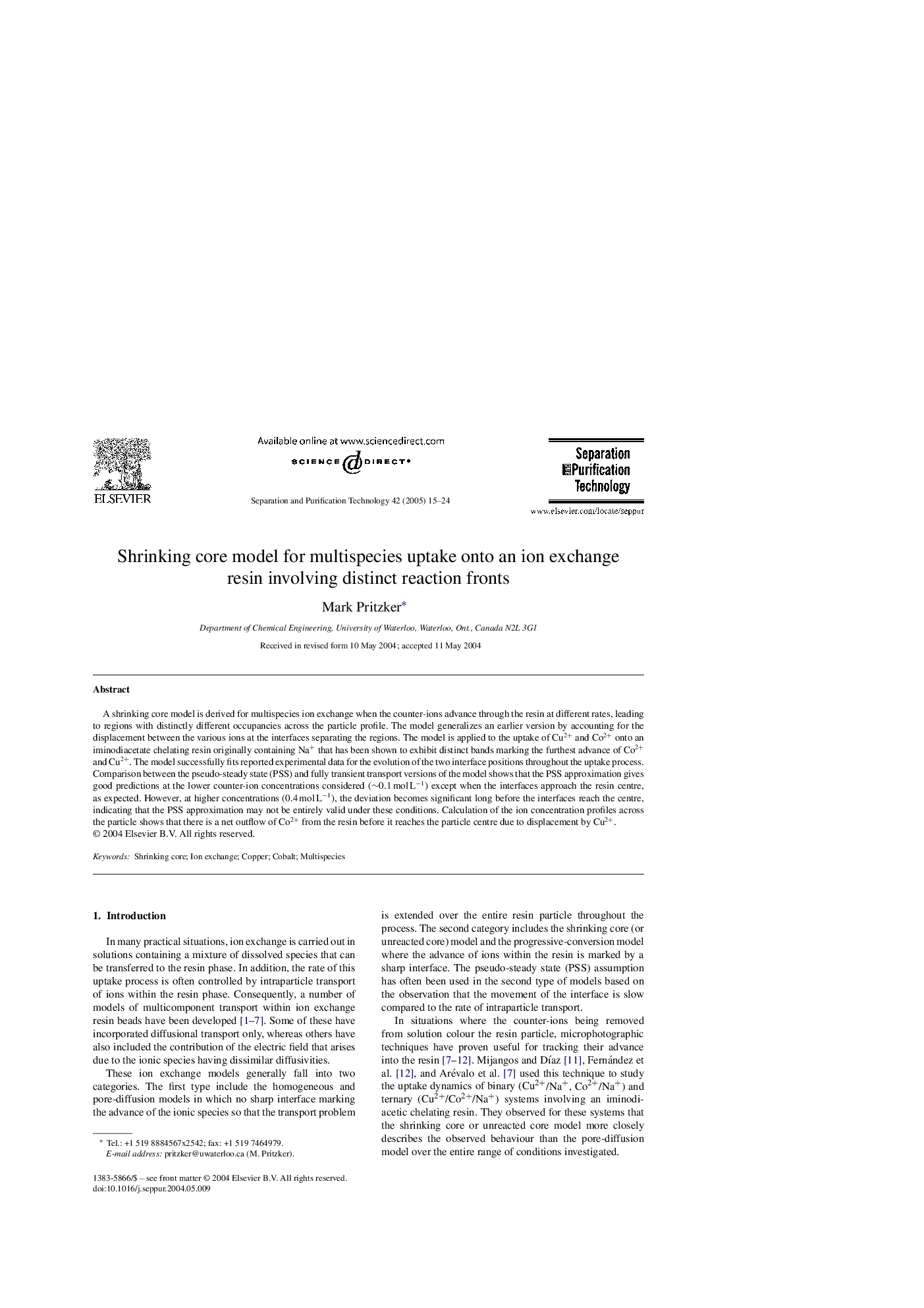| Article ID | Journal | Published Year | Pages | File Type |
|---|---|---|---|---|
| 10390071 | Separation and Purification Technology | 2005 | 10 Pages |
Abstract
A shrinking core model is derived for multispecies ion exchange when the counter-ions advance through the resin at different rates, leading to regions with distinctly different occupancies across the particle profile. The model generalizes an earlier version by accounting for the displacement between the various ions at the interfaces separating the regions. The model is applied to the uptake of Cu2+ and Co2+ onto an iminodiacetate chelating resin originally containing Na+ that has been shown to exhibit distinct bands marking the furthest advance of Co2+ and Cu2+. The model successfully fits reported experimental data for the evolution of the two interface positions throughout the uptake process. Comparison between the pseudo-steady state (PSS) and fully transient transport versions of the model shows that the PSS approximation gives good predictions at the lower counter-ion concentrations considered (â¼0.1 mol Lâ1) except when the interfaces approach the resin centre, as expected. However, at higher concentrations (0.4 mol Lâ1), the deviation becomes significant long before the interfaces reach the centre, indicating that the PSS approximation may not be entirely valid under these conditions. Calculation of the ion concentration profiles across the particle shows that there is a net outflow of Co2+ from the resin before it reaches the particle centre due to displacement by Cu2+.
Related Topics
Physical Sciences and Engineering
Chemical Engineering
Filtration and Separation
Authors
Mark Pritzker,
